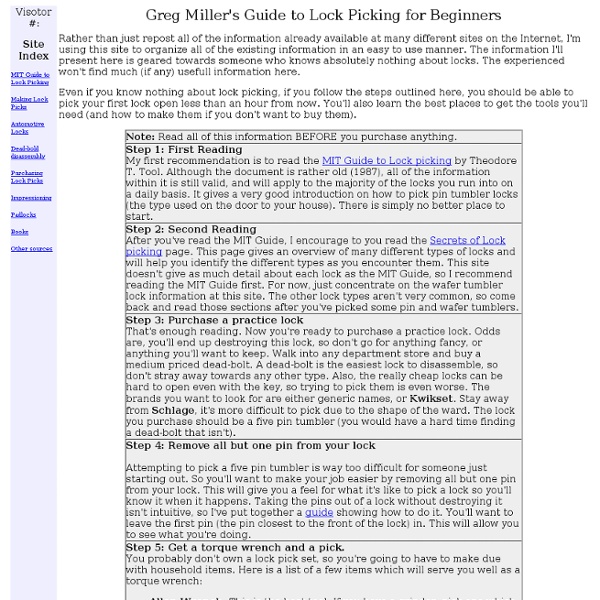



how to easily delete your online accounts | accountkiller.com - StumbleUpon Spring Financial is a finance company based in Canada. The company was founded in 2014. Spring Financial is a subsidiary of Canada Drives, which is a leading auto financing company in Canada. The Chief Executive Officer is Michael Galpin. The Director is Cody Green. The Customer Relations Manager is Laura Marchand. Upon loan approval, the funds will go into a secure trust account. Canceling your loan is simple.
Turn your beer bottles into glass cups! (5 easy steps)College Envy Glassware can get pretty expensive especially if you’re in college and always getting sh*t faced and breaking your glasses. Start just using your empty beer bottles and turning them into your new glasses. Look dope, easy to make and cheap! Arborsmith Studios Willpower Improvement page short(er)link: A subproject of ProductivityImprovement. Willpower is likely the most important factor for productivity. It is one of several abilities that can be improved through deliberate practice. The 2008-04-02 New York Times article Tighten Your Belt, Strengthen Your Mind (via Matthew Levine's tweet) documents several effects, and recommendations. willpower capacity From the article: "the brain has a limited capacity for self-regulation, so exerting willpower in one area often leads to backsliding in others""brain’s store of willpower is depleted when people control their thoughts, feelings or impulses, or when they modify their behavior in pursuit of goals""people who successfully accomplish one task requiring self-control are less persistent on a second, seemingly unrelated task." depleting willpower More quotes from the article: "activities that deplete willpower include" Task persistence is also reduced what limits willpower And more quotes:
Blog & Tentsile, the Portable Treehouse Want to go camping, but afraid of bugs, snakes, or bears? Pitch your tent in the air, above the forest floor and away from critters and potential predators, with Tentsile, "the world's most versatile tent." The portable tent-hammock hybrid can be used in nearly any environment, anchored to trees in the heart of a forest, hovering over shifting beach sands, pitched above the plains for a brief respite on a safari, or even suspended over disaster and flood zones. Add To Collection Save this image to a collection Handmade in the UK, the tents are fire retardant as well as UV and water resistant. Tentsiles are available in a variety of colors and in three sizes, each one with its own special features ranging from a cozy two-person with a covered porch, a roomier three-to-four person with built-in windows, and a huge five-to-eight person with a central gathering space that may prove better than a dingy room in any hostel.
104 Ways To Break The Ice January This is it — the year I get my sh-t together. Starting with eating right and exercising more. Although, it’s probably unhealthy to mentally associate self-improvement with the New Year, because if I quit, I won’t restart again until next year. So maybe I’ll just aim to start being healthier at some point this month. February I am so glad I’m going to the gym more — I feel so much better about myself and life in general. March Joining Match.com was the best decision I’ve ever made. April Never again am I going home. Addendum: Late April: I can’t believe I sent my brother’s birthday gift a month early! May I love the start of wedding season — so many people are getting married this year! June Those three weddings last month were so fun — and doing the “cha-cha slide” every Saturday with some of my closest acquaintances has been really energizing! July Alright, enough self-loathing and pity. August Holy hell, is summer almost over? September Thank the gods I am not in school anymore.
Custom Tree House Plans, DIY Ideas & Building Designs No, really: would you want to design, build and live in an real fantasy tree house all year round? More and more people have decided to do just that and where treehouses were once novelty architecture for kids they are now (almost) mainstream structures, as attested to by the pictures above via Bella Seven. Many modern tree house designs and home designers and custom builders take a site-specific approach and construct their tree buildings around not only views and rooms but also have to account for access and structural support in unique and novel ways. While a lot of attention is paid to lofty plans by fashionable designers, there are many people who continue to use quite conventional home-building plans, techniques and materials to construct tree homes and cabins that look much like ordinary residences on the ground below. And moving into the future, who is to say that tree houses will not continue to be considered for ever-more-urban applications?
Boating Knots Boating Knots Welcome to Boating Knots These animated knots are primarily for boaters, but many are useful for anyone who uses rope and values safety. Select the knots from: the index above left; the pictures above; or the Boating Usage page. Selection The selection of knots is based on many years of sailing combined with feedback and advice from several helpful captains. Boating Knot Characteristics Rope used in boating is durable and expensive and is often handling heavy loads, e.g., when berthing, mooring, towing another vessel, preparing for a storm, or managing sails. Standing End, Tail, and Bitter End Bitts and Bitter End In many knots there is Standing End - which takes the strain, and a Tail - the loose end in your hand. Mooring Lines and Names Mooring lines on large ships are nearly always made of a high-modulus polyethylene (HMPE) such as Vectran® or Dyneema®. On yachts mooring lines are more likely to be made of nylon, or polyester (Dacron® or Terylene®).